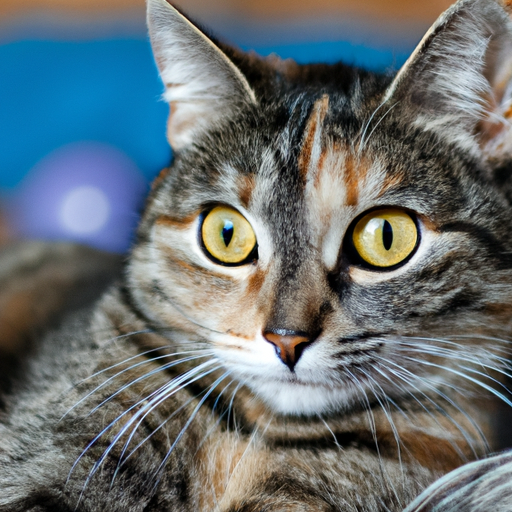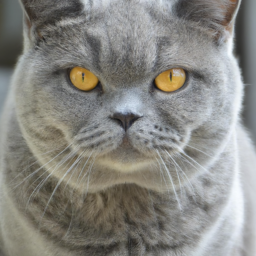How Long Do Cats Stay In Heat?
You’re probably a devoted cat owner, looking for answers, and the question at hand is an important one: “How long do cats stay in heat?” This informative article provides crucial insights into the ways nature has programmed your feline friend. From the primary heat signs to the varying durations and repetitive cycles that could signal potential health concerns, you’ll garner a deepened understanding of what to expect and how to ensure your cat’s well-being during these periods.

Understanding Cat’s Heat Cycle
Cats, much like all mammals, have a reproductive cycle. For our feline friends, this is often referred to as the heat cycle. But what is this heat cycle and how does it work? We’re here to help you understand it all.
Defining ‘Heat’ or ‘Estrus’ Phase
In medical terms, “heat” is often referred to as the ‘Estrus’ phase. As an owner, it’s quite easy to get confused about these terms. Simply put, when your cat is in ‘heat’, she’s ready to mate. This ‘Estrus’ phase is basically a period where your cat’s body triggers the reproductive hormones, resulting in behavioral changes as she seeks a mate.
How a Cat’s Heat Cycle Works
The heat cycle in cats is dictated by various hormonal changes. The cycle begins with the Proestrus phase, where your cat’s body prepares for reproduction. The Estrus, or heat phase, follows, this is when she becomes receptive to males. If mating doesn’t occur, the cycle moves to the Diestrus phase, a resting period before the cycle begins again.
How Long is the Heat Cycle in Cats?
Understanding the duration and frequency of the heat cycle in cats can help you better manage your pet’s well-being.
Frequency of the Heat Cycle
A cat’s heat cycle varies, but on average they go into heat every two to three weeks. Some cats, however, may enter the heat phase more frequently, depending on various factors such as breed, health, and environment.
Duration of Each Heat Phase
Each heat phase usually lasts about six days but can range from two to 19 days. If a cat does not mate during this period, she will likely go back into heat within a matter of weeks.
The Onset of Heat Cycle in Cats
The onset of the heat cycle in cats can depend on age and breed. Let’s delve a little deeper into this.
Age-related Onset of Heat Cycle
Cats tend to come into heat for the first time when they’re about six months old, although this can differ from cat to cat. Some cats won’t have their first heat cycle until they’re a year old, while others may start as early as four months.
Breed-specific Onset of Heat Cycle
Certain breeds of cats tend to start their heat cycles earlier than others. For instance, Siamese cats are known to start their heat cycles earlier, potentially as young as four months old.
Signs That Your Cat is in Heat
Recognizing the signs that your cat is in heat can be essential to providing her with the comfort and care she needs during this time.
Behavioral Changes
There are several behaviors your cat may display when in heat. You might notice her becoming more affectionate, or she may become more vocal, often making noise throughout the day and night. She may also display a “mating” position, lowering her front body and raising her rear end.
Physical Symptoms
While physical signs are harder to notice than behavioral changes, you may see some subtle signs like an increased appetite or a slightly swollen vulva.
How to Confirm if Your Cat is in Heat
If you suspect your cat is in heat, look for the signs discussed before. However, the best way to confirm if your cat is in heat is to take her to a vet. A professional can perform an examination and provide you with an accurate diagnosis.

How Long Do Cats Stay In Heat?
The duration of the heat period in cats can differ significantly.
Duration of Heat Period in Unspayed Females
Unspayed females usually stay in heat for about a week. If she doesn’t mate, she’ll typically go out of heat for a short period before going back into heat.
Factors Affecting Duration of Heat
Various factors can influence how long a cat stays in heat, including her breed, age, health status, and environmental conditions such as day length and temperature.
What Happens If a Cat Doesn’t Mate While in Heat?
If a cat doesn’t mate while in heat, she won’t fall pregnant, but this also comes with some potential issues.
Continuous Estrus Cycle
The most immediate consequence of not mating while in heat is a continuous estrus cycle. This means that your cat will constantly go in and out of heat until she mates.
Health Risks Associated with Non-mating Heat Cycles
Continuous heat cycles without mating can lead to several health problems for your cat, including uterine infections and a decreased immune system.
Managing a Cat in Heat
Managing a cat in heat might seem challenging, but with a few simple steps, you can keep your feline comfortable during this period.
Environment Arrangements
Provide your cat with a quiet and warm place to rest. Cats in heat can also be quite restless, so make sure they have safe outlets for their energy, like cat toys.
Diet and Hydration
Cats in heat may have increased appetites, so providing nutritious food is crucial. Also, ensure she has access to plenty of fresh water.
Comfort Measures
Giving her more attention and gentle petting can help soothe a cat in heat.
Preventing the Heat Cycle in Cats
Spaying is the most effective way to prevent the heat cycle in cats.
Spaying Procedure and Its Benefits
Spaying involves surgically removing a cat’s ovaries, which suppresses the heat cycle. Spaying also reduces the risk of certain health issues like ovarian cancer and uterine infections.
When to Spay Your Cat
The best time to spay your cat can depend on her specific health and lifestyle circumstances. However, most vets recommend spaying before a cat’s first heat cycle, around six months of age.
Health Risks If Cats Stay in Heat for Too Long
Extended periods in heat can pose health risks to your cat.
Pyometra (Uterus Infection)
Continuous heat cycles can elevate the risk of a severe uterine infection known as pyometra. This is a life-threatening condition that requires immediate veterinary care.
Risk of Accidents or Getting Lost While Seeking Mates
When in heat, cats are driven to find a mate, which may cause them to try to escape the home and get lost or injured.
Seeking Veterinary Advice
Seeking veterinary advice can be essential in managing your cat’s heat cycle and overall health.
When to Consult a Vet
If you notice symptoms like prolonged heat cycles, widespread behavioral changes, or signs of discomfort, you should consult a vet.
Long-term Health Management of Cats in Heat
Your vet can provide advice about managing the long-term health of your cat, including things like diet, exercise, and when (or if) to spay your cat. In the end, understanding your cat’s heat cycle, knowing the signs, and having a plan can make this natural process a lot less stressful for both you and your beloved pet.







